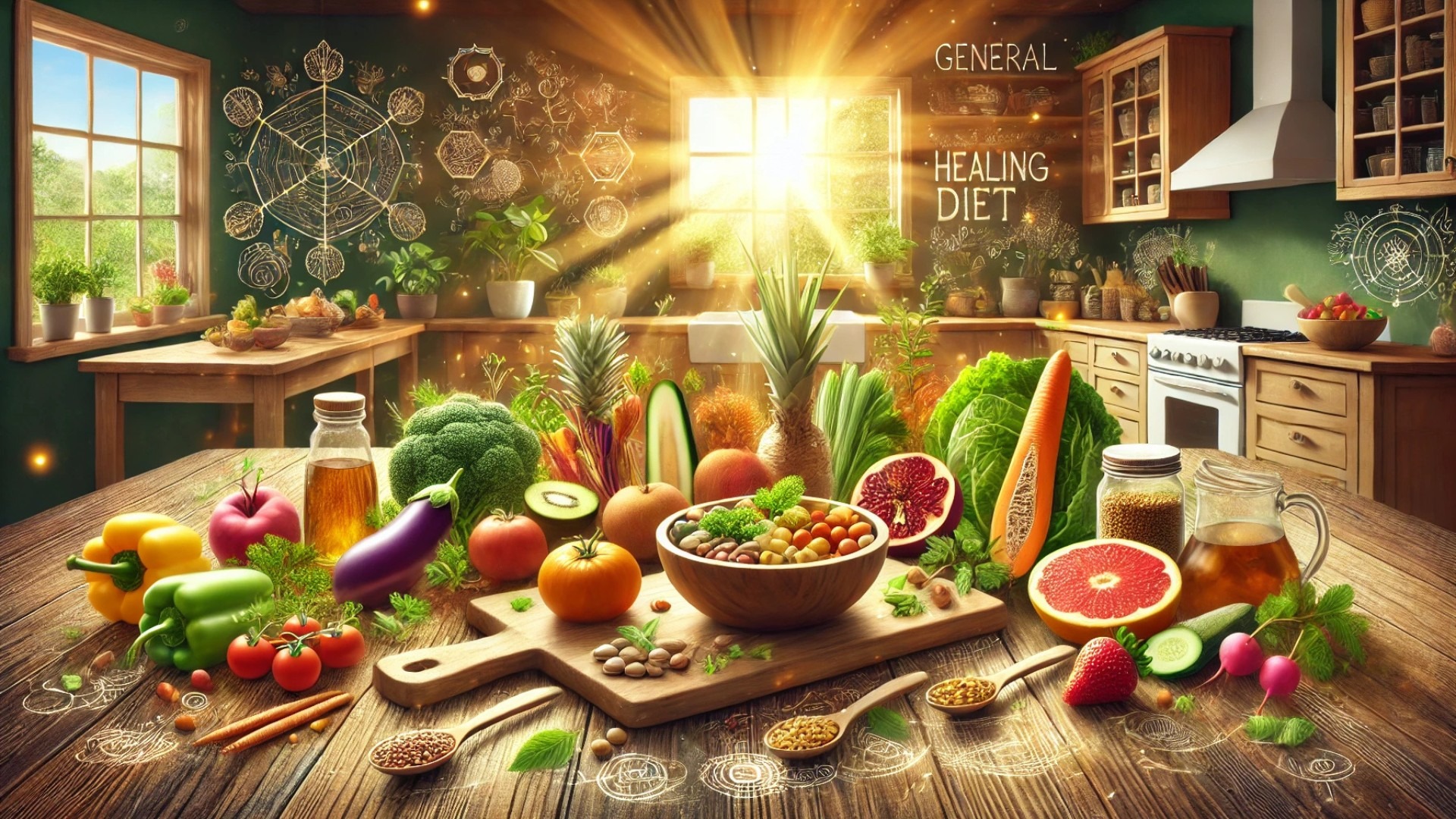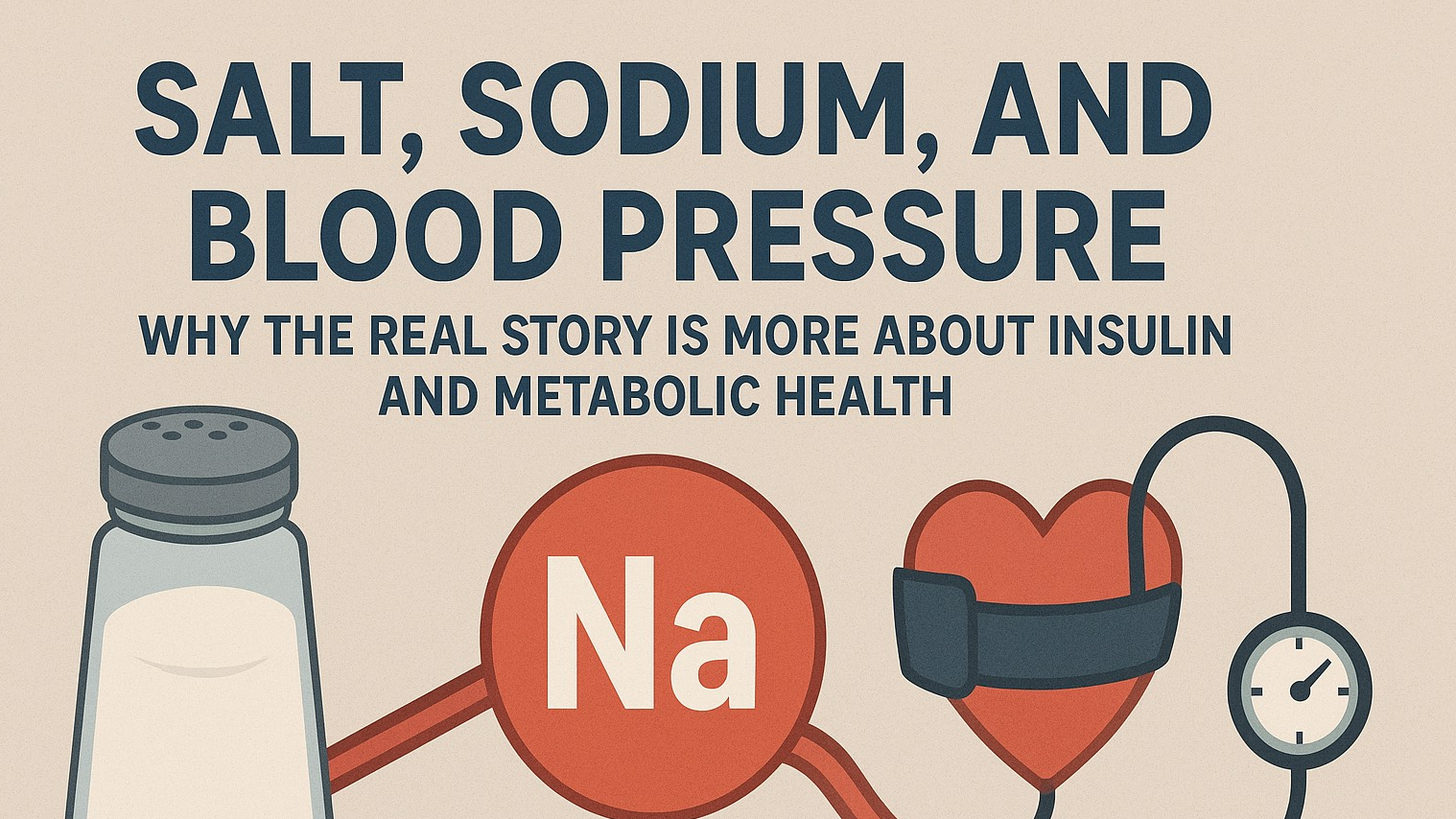
In the world of functional medicine, the saying "food is medicine" takes center stage. Unlike conventional dietary approaches that may prioritize caloric restriction or macronutrient ratios, the General Healing Diet focuses on the nutrient density, anti-inflammatory properties, and the ability of food to support the body’s innate healing mechanisms. Let’s explore the science behind this diet, its guiding principles, and three recipes to kickstart your journey toward vibrant health.
The Philosophy of the General Healing Diet
“Let food be thy medicine and medicine be thy food.” — Hippocrates
Functional medicine views health through the lens of interconnected systems. The General Healing Diet aligns with this approach by emphasizing whole, unprocessed foods that nurture the microbiome, regulate inflammation, and balance hormones. This dietary framework is not about deprivation but empowerment—teaching your body to thrive by providing it with the nutrients it needs to heal and perform optimally.
Scientific Backing:
Gut Health: A study published in Nature (2019) demonstrated that high-fiber, plant-rich diets improve gut microbiota diversity, which correlates with reduced systemic inflammation. Soluble fiber from foods like oats, beans, and apples has been shown to promote the growth of beneficial bacteria like Bifidobacterium and Lactobacillus, essential for maintaining a healthy gut lining.
Anti-Inflammatory Foods: Research in Nutrients (2020) highlights the anti-inflammatory effects of polyphenol-rich foods such as berries, green tea, and turmeric. Curcumin, the active compound in turmeric, has been studied extensively for its ability to inhibit inflammatory markers such as NF-kB and COX-2, which play a role in chronic disease.
Herbs for Healing: Studies in Phytomedicine (2022) reveal that herbs like rosemary, thyme, and oregano possess antimicrobial and antioxidant properties. These herbs not only flavor food but also combat oxidative stress and support the immune system.
-
Whole Foods and Longevity: The American Journal of Clinical Nutrition (2021) linked whole food-based diets with a decreased risk of chronic diseases, including cardiovascular disease and type 2 diabetes. Researchers found that higher intake of vegetables, nuts, and legumes is associated with improved metabolic health and reduced mortality.
Key Principles of the General Healing Diet
“Every time you eat or drink, you are either feeding disease or fighting it.” — Heather Morgan
Nutrient Density: Prioritize foods packed with vitamins, minerals, and antioxidants. Dark leafy greens, nuts, seeds, and colorful vegetables take center stage. For example, spinach and kale are rich in magnesium, which supports nerve and muscle function.
Anti-Inflammatory Ingredients: Incorporate omega-3-rich foods like salmon and walnuts, and spices like ginger and turmeric. Omega-3 fatty acids from fish and flaxseeds reduce the production of inflammatory eicosanoids and cytokines.
Blood Sugar Balance: Focus on low-glycemic carbohydrates, healthy fats, and quality protein to prevent spikes in blood sugar levels. For instance, combining quinoa with avocado and grilled chicken can create a balanced meal that sustains energy.
Gut Microbiome Support: Fermented foods like kefir, kimchi, and sauerkraut provide probiotics, while prebiotics from garlic, onions, and bananas feed healthy gut bacteria.
Herbal Integration: Use herbs such as basil, cilantro, and dandelion to detoxify and support liver function. Dandelion root tea, for instance, is known to aid in digestion and bile production.
Eliminating Toxins: Beyond avoiding ultra-processed foods, consider the broader sources of toxins in your environment. Conventionally farmed foods are often sprayed with glyphosate and other harmful pesticides, which have been linked to disruptions in gut health and increased cancer risk (Environmental Health Perspectives, 2021). Whenever possible, choose organic produce and pasture-raised meats to minimize exposure.
Environmental and Household Toxins: The average household is inundated with chemical-laden products—from plastic food storage containers leaching endocrine-disrupting chemicals like BPA, to everyday items such as shampoos, body washes, and cleaning products containing harmful parabens, sulfates, and synthetic fragrances. Opt for glass storage containers, non-toxic cleaning products, and organic, chemical-free personal care items to reduce your toxin load.
Factory Farming and Animal Welfare: Factory farming practices pose significant health and ethical concerns. Animals raised in these environments are often confined to small spaces, fed unnatural diets, and treated with antibiotics and growth hormones. This not only raises concerns about animal welfare but also introduces harmful substances into the human food chain. Antibiotics overuse contributes to antibiotic resistance, while growth hormones may disrupt endocrine systems in humans. Factory farming is also associated with significant environmental degradation, including water pollution and greenhouse gas emissions. By choosing sustainably raised, grass-fed, or free-range animal products, you not only support ethical farming practices but also reduce exposure to toxins and promote environmental sustainability.
The Toxicity of Everyday Products
“Detoxifying your life isn’t just about food—it’s about the air you breathe, the products you use, and the water you drink.” — Unknown
Everyday exposure to environmental toxins extends far beyond the food we eat. Plastic products, personal care items, and household cleaning supplies are significant contributors to the toxic burden on our bodies.
1. Plastics: Plastics used for food storage and packaging often leach harmful chemicals like bisphenol A (BPA) and phthalates, which act as endocrine disruptors. These chemicals can interfere with hormone balance, potentially leading to issues like reproductive health problems, metabolic disorders, and even cancer. Switching to glass or stainless steel containers is a simple way to reduce this exposure.
2. Personal Care Products: Shampoos, soaps, makeup, and lotions often contain parabens, synthetic fragrances, and other harmful chemicals. Parabens have been linked to hormonal disruption, while synthetic fragrances often contain phthalates, which can exacerbate allergies and other sensitivities. Opting for organic or all-natural products free from these additives can significantly reduce toxin absorption through the skin.
3. Cleaning Supplies: Many conventional cleaning products contain volatile organic compounds (VOCs), ammonia, and bleach, all of which can irritate the respiratory system and contribute to indoor air pollution. Choosing natural cleaning alternatives, such as vinegar and baking soda, or buying non-toxic, eco-friendly brands can greatly reduce exposure.
Addressing Nutritional Deficiencies
“You are what you absorb, not just what you eat.” — Unknown
Common Deficiencies: Many individuals are deficient in essential nutrients such as vitamin D, magnesium, omega-3 fatty acids, and zinc due to poor dietary choices, soil depletion, and chronic stress. For example, the CDC reports that approximately 10% of Americans are vitamin D deficient, contributing to immune dysfunction and bone health issues.
Targeting Deficiencies Through Diet: Incorporating nutrient-dense foods like fatty fish, eggs, seeds, nuts, and fortified plant milks can help combat these deficiencies. Dark leafy greens provide magnesium, while shellfish and legumes are excellent sources of zinc.
Absorption Matters: Gut health plays a crucial role in nutrient absorption. Addressing gut inflammation through probiotics, bone broth, and anti-inflammatory foods ensures you maximize nutrient uptake.
3 Healthy Recipes to Support Everyday Healing
1. Anti-Inflammatory Golden Smoothie
“Health is not about the weight you lose, but about the life you gain.” — Dr. Josh Axe
Ingredients:
1 cup unsweetened almond milk
½ tsp turmeric powder
¼ tsp cinnamon
1 tsp fresh ginger (grated)
1 frozen berries
1 scoop plant-based protein powder
½ an avocado
Instructions:
Add all ingredients to a blender.
Blend until smooth and creamy.
Serve immediately.
Benefits: This smoothie supports anti-inflammatory pathways and balances blood sugar. Curcumin and ginger work synergistically to reduce inflammation, while banana provides potassium for electrolyte balance.
2. Mediterranean Quinoa Salad
“Eat food, not too much, mostly plants.” — Michael Pollan
Ingredients:
1 cup cooked quinoa
1 cup cherry tomatoes (halved)
1 cucumber (diced)
¼ cup red onion (finely chopped)
½ cup fresh parsley (chopped)
¼ cup kalamata olives
2 tbsp extra virgin olive oil
1 tbsp lemon juice
Salt and pepper to taste
Instructions:
Combine quinoa, tomatoes, cucumber, red onion, parsley, and olives in a large bowl.
Drizzle olive oil and lemon juice on top.
Toss well and season with salt and pepper.
Chill for 20 minutes before serving.
Benefits: Rich in fiber, healthy fats, and phytonutrients, this salad supports heart health and digestion. The olive oil contains oleic acid, which has been shown to reduce inflammation and improve lipid profiles.
3. Nourishing Bone Broth Soup
“The groundwork of all happiness is health.” — Leigh Hunt
Ingredients:
4 cups bone broth (chicken or beef)
1 cup carrots (sliced)
1 cup celery (sliced)
1 onion (chopped)
2 cups spinach
1 clove garlic (minced)
1 tbsp olive oil
Salt and pepper to taste
Instructions:
Heat olive oil in a large pot over medium heat.
Sauté garlic and onion until fragrant.
Add carrots and celery; cook for 5 minutes.
Pour in bone broth and simmer for 15 minutes.
Add spinach; cook until wilted.
Season with salt and pepper before serving.
Benefits: Packed with collagen, minerals, and gut-healing compounds, this soup supports immunity and joint health. Studies have shown that collagen peptides improve skin elasticity and reduce joint pain.
Closing Thoughts
“Your body is your most priceless possession. Take care of it.” — Jack LaLanne
The General Healing Diet is not a one-size-fits-all approach but a flexible, science-backed strategy to empower your body’s natural ability to heal. By incorporating nutrient-dense, anti-inflammatory foods, healing herbs, and reducing toxin exposure in your diet and environment, you pave the way for long-term health and vitality. Start small, and remember that every bite and choice is an opportunity to support your wellness journey.
 Add Row
Add Row  Add
Add 










Write A Comment